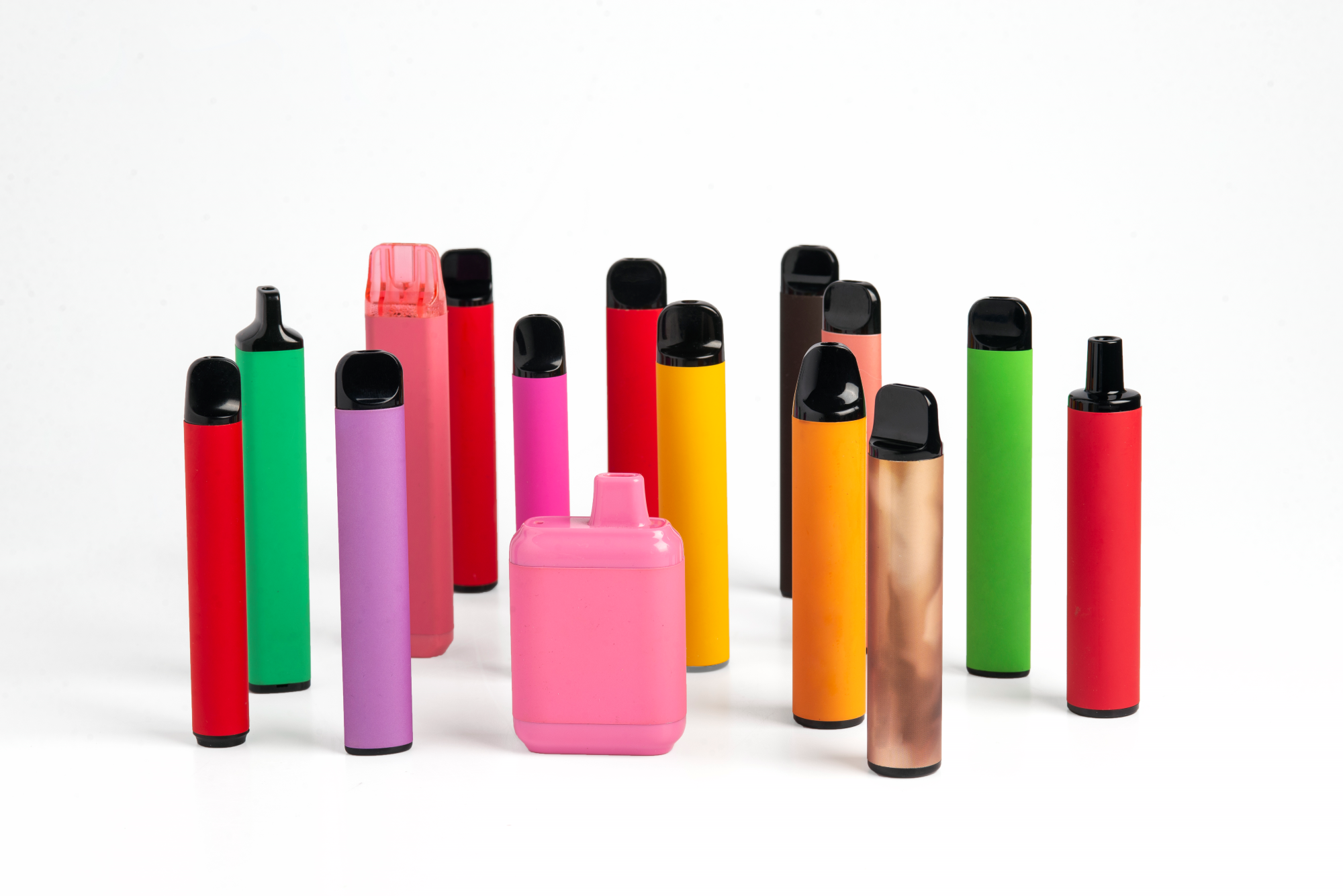Principal Scientist, Paul Barr, shares his takeaways from the recent Future Cannabis Strategies conference in London.
Consumer Vape Products - Importance of Shelf Life Studies
Nicotine

Oct 13, 2023 | Published by Paul Barr
Nicotine
Electronic cigarettes, more commonly known as vape products and e-cigarettes, operate by heating a nicotine-containing liquid formulation (commonly referred to as an e-liquid) to generate an inhalable aerosol delivered to the user's lungs. Predominantly, the e-liquid comprises propylene glycol and glycerol, which are generally used as the aerosol formers, nicotine as the active ingredient, and may also contain flavor mixtures and organic acids. For closed systems and disposables, the e-liquid is contained within the cartridge or device; however, due to airflow passage required to activate these devices and generate an aerosol, these e-liquids are typically exposed to the environment outside the cartridge.
The propylene glycol and glycerol component in the e-liquid itself is hygroscopic and, therefore, may readily take on the water from the environmental moisture; additionally, nicotine readily degrades via oxidation. The mode of operation, design, and contents of electronic cigarettes would strongly imply that shelf life assessments to evaluate and substantiate the long-term stability of these products should be critical studies at the cornerstone of their quality framework.
However, these scientific studies are often driven by regulatory requirements, and the regulatory demand for shelf studies on these consumer products can vary significantly between global markets depending on the local legislation. In the US, these products are regulated through the Premarket Tobacco Product Application (PMTA) process, where stability information is a mandatory requirement to demonstrate that the product does not generate different considerations for public health over its proposed shelf life and failure to provide stability data may result in deficiency responses and ultimately marketing denial orders (MDO).
All vape products, pods, and e-liquids sold in the UK or EU must be notified under the UK's Tobacco and Related Products Regulations (TRPR) and the EU's Tobacco Product Directive (TPD). However, currently, these regulations have no specific requirement for stability data. Nevertheless, an update to these regulations is currently planned and under consultation, though it is difficult to predict if the stability study requirement to substantiate shelf life will be included in the newest iteration of these regulations. In the absence of stability study requirements, several recent European Committee for Standardization (CEN) publications address the need for shelf life evaluation for these products; the CEN standards for General Principles for manufacturing, filling, and holding e-liquids for prefilled containers or products (EN 17647:2022) and E-liquid ingredients (EN17648:2022) propose that shelf life should be established for the product with supporting documentation.
For electronic cigarettes, regardless of the regulatory requirements of each market, stability studies and shelf life assessments are essential studies, and manufacturers should ensure there is a comprehensive understanding of the stability and potential breakdown or formation of degradation products, as this is pivotal in the characterization of the product and in substantiating the shelf life.
Poor product stability or inadequate protection from the environment due to an unsatisfactory quality of packaging can result in moisture ingress. Water ingress may dilute the nicotine concentration in the e-liquid, resulting in an inconsistent delivery of nicotine over the shelf life and potential changes in the physical characteristics of the e-liquid, such as density and viscosity. Changes in viscosity can contribute to product leakage but may also result in non-functioning products as some commonly used wicking materials, i.e., ceramic, will only function properly with liquids within a specific viscosity range. Additionally, exposure to the environment can result in the oxidation of nicotine, leading to changes in the product appearance and formation of degradation products; this may result in an increased toxicological risk for the consumer. These risks represent just some of the concerns that should be considered over the shelf life of electronic cigarettes.
E-cigarettes provide a nicotine alternative for millions of smokers; therefore, maintenance of nicotine delivery as advertised on the label throughout the shelf life is vital to prevent users from transitioning back to combustible alternatives due to unsatisfactory product performance. Additionally, all products must not impact the consumer above the toxicological limits of concern across their shelf life; therefore, any contribution of breakdown products to toxicological effects must be negligible. As a consumer product, these extensive characterization studies help build consumer and regulatory trust in this category and demonstrate that manufacturers understand how their product performs throughout the shelf life.
Although we believe regulatory and standard compliance, maintaining efficacy, and ensuring consumer safety through drug product quality are the principal reasons for performing stability studies, stability evaluation can have significant other benefits for manufacturers' understanding of their products. For example, stability data can inform packaging selection and is valuable in new product development. Additionally, stability data allows manufacturers to control their supply chain more efficiently and may help plan manufacturing schedules to meet market needs and minimise the risk of financial losses due to overmanufacturing.
Generating this data now with a robustly designed stability program bespoke for individual products will help prepare for potential future regulation. In addition, it may be used as supporting data or to check the feasibility of a different regulatory route, such as pivoting from a consumer-based product to a licensed medicinal product via the Marketing Authorisation Application (MAA) pathway.
In conclusion, from a regulatory perspective, the requirement for stability studies on consumer vape products mainly depends on the market. However, it is a manufacturer’s responsibility to fully characterize their product and understand how it performs throughout its shelf life. Shelf life claims on consumer products must be substantiated with analytical data. Even in the absence of specific regulation around stability, manufacturers have a duty of care towards consumers and must create their own product safety and stewardship frameworks. Stability studies should be a pillar of these frameworks to ensure the quality, efficacy, and safety of these products. With the recent scrutiny in the vaping industry, reports of non-compliant products, and increased quantities of illicit vaping products, it is more critical than ever that these types of rigorous scientific studies are performed so that manufacturers can build trust with consumers, regulators, and policymakers to ensure they are a reputable manufacturer who fully understands their products.
Learn more about the types of shelf life studies Broughton offers here.


